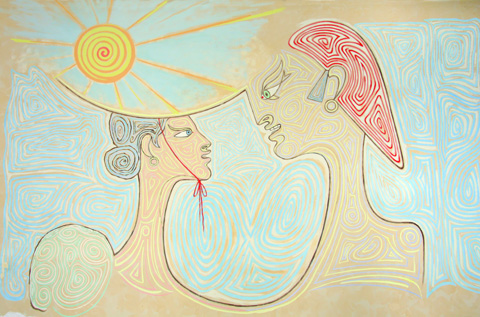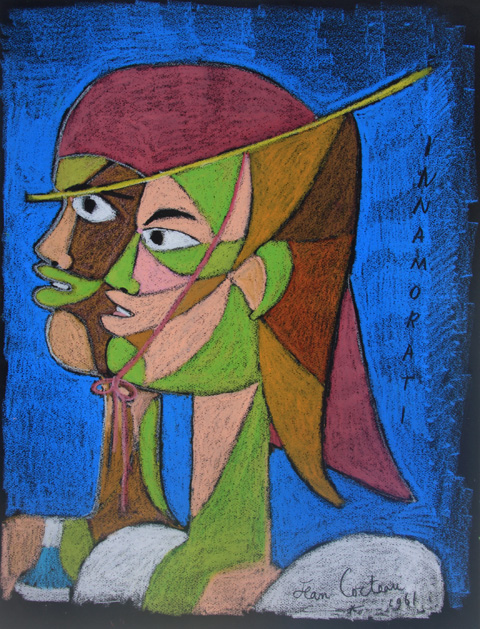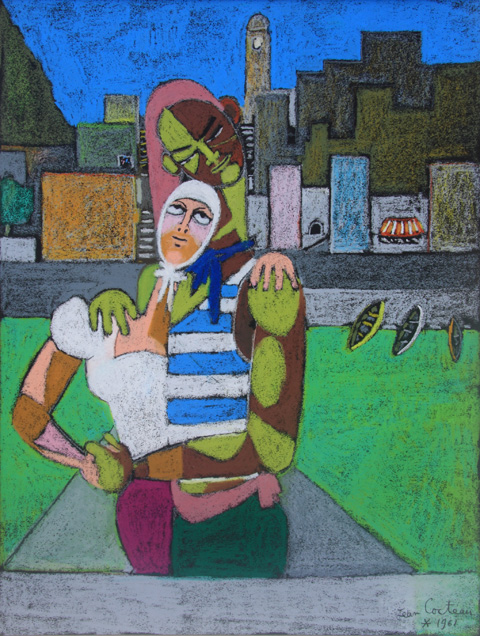The "Innamorati"
When he decorated the Saint-Pierre chapel in Villefranche-sur-Mer, Jean Cocteau painted on its walls characters dressed in traditional Mediterranean attire: the young men wear the floppy caps of local fishermen and the young women the "capeline", a wide-brimmed straw hat. Shortly afterwards, he represented these characters again, this time as a couple, on the walls of the wedding hall in Menton: thus were born his famous lovers.

A few years later, in 1961, he discovered in the portfolios of his friend Picasso, who was then living in Cannes, a peculiar drawing which looked like a pastel, but was, in fact, a different medium: Picasso had used wax crayons on a heavily textured colour drawing paper, and the effect reminded Cocteau of "the multi-coloured velvet of a butterfly wing." Captivated, Cocteau borrowed this technique from his friend to depict his characters in a series of 21 drawings which he called "Innamorati", after the name given to loving couples in Commedia dell’arte. These drawings present a series of variations on the theme of burlesque scenes from the love life of a couple with "animal foolishness", in the setting of a typical port on the Riviera coast.

"I asked Picasso to find me the pastel that I had admired so much the other day and which resulted from layering the Caran d’Ache crayons which we always use, but are very difficult to recognise using this trick. […] I eventually figured out that this appearance of pastel came from a very heavy layering of coloured crayons on a dark background (either black paper or India ink). He reminded me that these crayons were made of wax and built up without blending, forming a sort of glaze and, furthermore, that they did not require any fixative. […] Back at the Cap, I tried this method and put into practice one of my axioms: an artwork starts becoming interesting when you mess it up and it seems unsalvageable. That’s when you save it."
